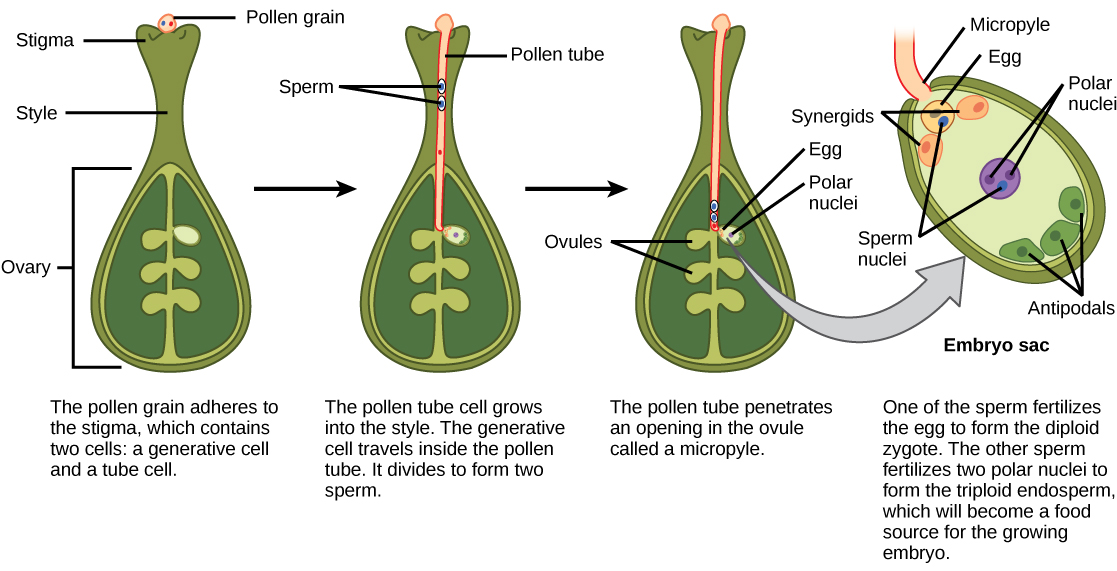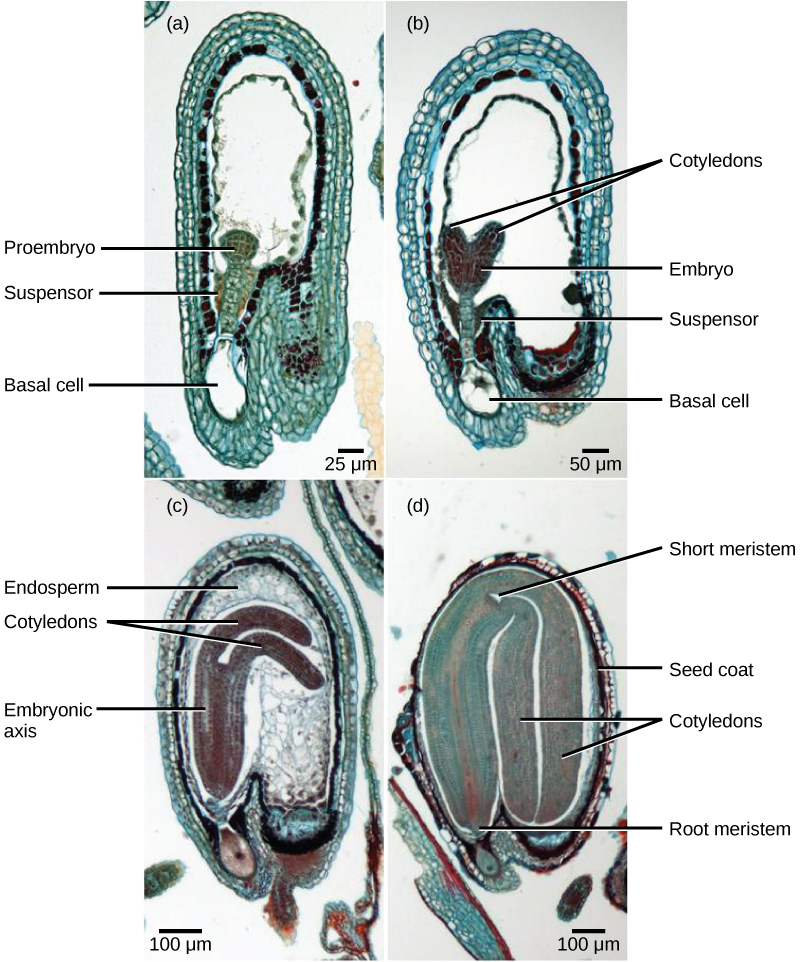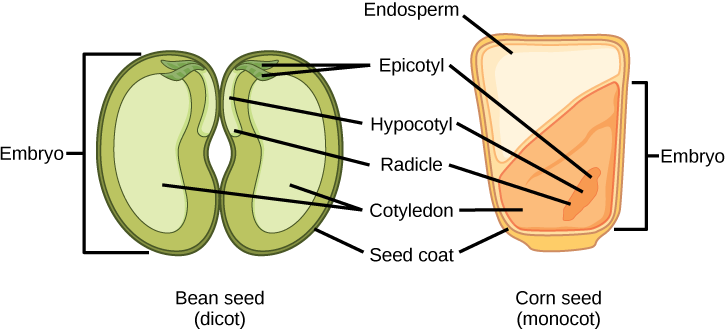| << Chapter < Page | Chapter >> Page > |

After fertilization, the zygote divides to form two cells: the upper cell, or terminal cell, and the lower, or basal, cell. The division of the basal cell gives rise to the suspensor , which eventually makes connection with the maternal tissue. The suspensor provides a route for nutrition to be transported from the mother plant to the growing embryo. The terminal cell also divides, giving rise to a globular-shaped proembryo ( [link] a ). In dicots (eudicots), the developing embryo has a heart shape, due to the presence of the two rudimentary cotyledons ( [link] b ). In non-endospermic dicots, such as Capsella bursa , the endosperm develops initially, but is then digested, and the food reserves are moved into the two cotyledons. As the embryo and cotyledons enlarge, they run out of room inside the developing seed, and are forced to bend ( [link] c ). Ultimately, the embryo and cotyledons fill the seed ( [link] d ), and the seed is ready for dispersal. Embryonic development is suspended after some time, and growth is resumed only when the seed germinates. The developing seedling will rely on the food reserves stored in the cotyledons until the first set of leaves begin photosynthesis.

The mature ovule develops into the seed. A typical seed contains a seed coat, cotyledons, endosperm, and a single embryo ( [link] ).

What is of the following statements is true?
The storage of food reserves in angiosperm seeds differs between monocots and dicots. In monocots, such as corn and wheat, the single cotyledon is called a scutellum ; the scutellum is connected directly to the embryo via vascular tissue (xylem and phloem). Food reserves are stored in the large endosperm. Upon germination, enzymes are secreted by the aleurone , a single layer of cells just inside the seed coat that surrounds the endosperm and embryo. The enzymes degrade the stored carbohydrates, proteins and lipids, the products of which are absorbed by the scutellum and transported via a vasculature strand to the developing embryo. Therefore, the scutellum can be seen to be an absorptive organ, not a storage organ.

Notification Switch
Would you like to follow the 'Biology' conversation and receive update notifications?